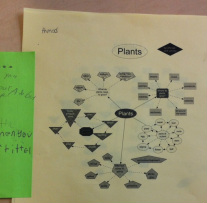
After mucking around with mind mapping collectively during our study of Soils in Science earlier in the year, and trying out a mind map in small groups to show connections between different characters, plot twists and settings in a novel I was reading aloud, I decided to get some help from the experts. The idea was to have students create a mind map at the end of our Plants unit in science, showing everything they had learned, and how it was connected. I knew, though, that my own understanding of the mind mapping software I wanted them to use was limited. So I enlisted the help of a few students from another class who had used mind mapping earlier in the year.
My Grade threes really enjoyed seeing the work of the older students, and were excited to try out this way of showing what they learned themselves.
We spent several periods in the computer lab with our student tutors helping to show the kids in my class how to fight with the program to get the best results. My own students could choose to work alone, or with a partner. When they had finished their mind maps, they printed them out, and brought them back to class to share with others.
I'm a big believer in developing one's own ideas by seeing what others are up to (in Art, for example, we often begin by looking at the work of a particular artist, and then I allow my students to copy the style of, or even an actual painting by, that artist, in order to develop their own skills and style).
So, I had students place their mind maps on their tables, with a sticky note attached to each side. One note was for observations, the other for questions. Their task was to go check out other people's work, and comment on what they noticed, as well as jot down any questions they had while examining the mind map. They were to do this for at least three different mind maps, and only one of them could be their friend's.
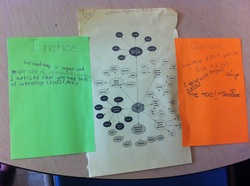
Although not every student was apt at commenting precisely on their peers' work, each student came back to her own mind map with a plethora of ideas for improvement of future drafts.
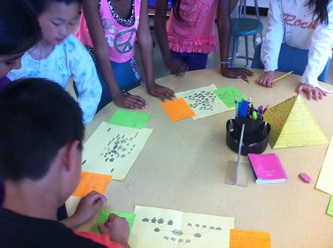
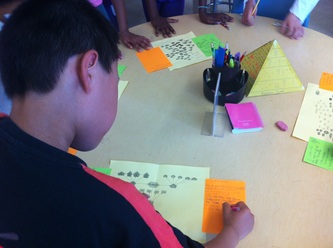
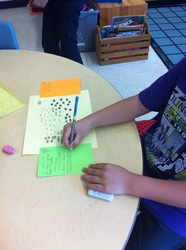
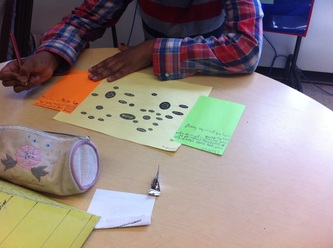



 RSS Feed
RSS Feed